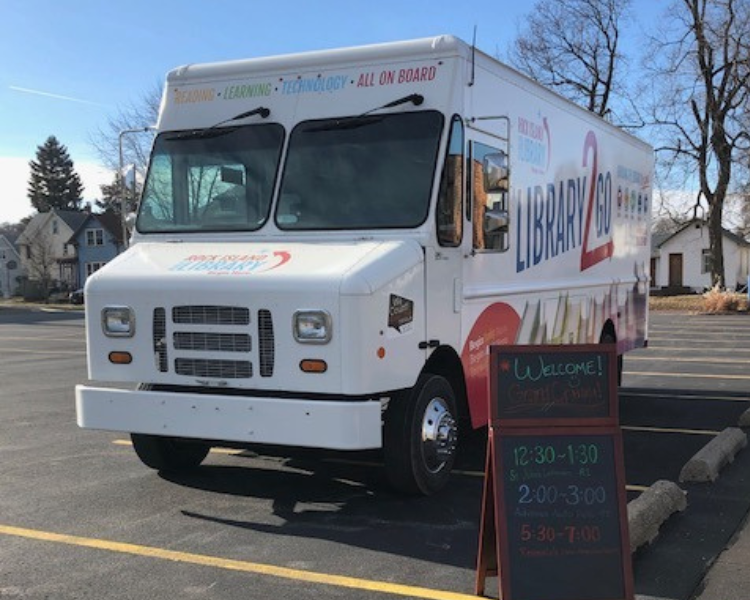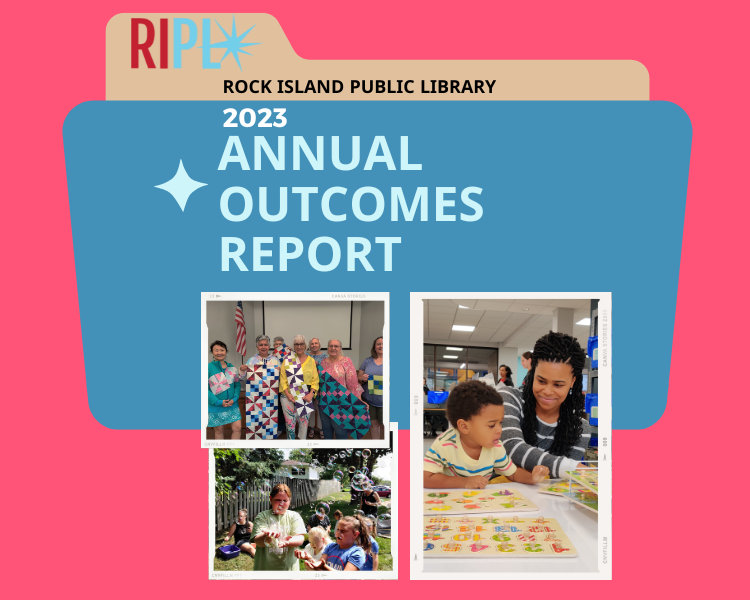Popular Fiction - Disability Pride Month
-
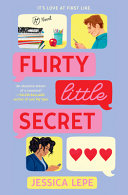
Flirty Little Secret
Guidance counselor Lucy Galindo works hard at being Harview High's Most Likely to Blend In. Between managing her anxiety and depression and having never found her place, Lucy knows she'd crumble at the center of attention. So when she spills boiling tea on the hot new teacher (in front of everyone!), it's a nightmare come to life.
Aldrich Fletcher is having the worst first day: thanks to a clumsy (and well, beautiful) mystery woman, his pants are soaked; his ex-girlfriend is his new co-worker, and his estranged dad won't stop trying to talk to him. Thankfully, he can count on his online confidant, the wildly popular @TheMissGuidedCounselor, for advice: like how to woo Lucy, for whom he's falling hard.
Only Lucy has a secret: she's @TheMissGuidedCounselor. And because her alter-ego is everything she's not-brave, confident, wise-Lucy's terrified of her two lives meeting. So when Fletcher realizes the truth, how can he find the courage to tell her-knowing it might end their growing romance? But for them to have a future, Lucy will need to realize she and her alter-ego aren't so different. Because loving yourself can be the bravest thing of all.
-
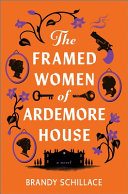
The Framed Women of Ardemore House
Jo Jones has always had a little trouble fitting in. As a neurodivergent, hyperlexic book editor and divorced New Yorker transplanted into the English countryside, Jo doesn't know what stands out more: her Americanisms or her autism.
After losing her job, her mother, and her marriage all in one year, she couldn't be happier to take possession of a possibly haunted (and clearly unwanted) family estate in North Yorkshire. But when the body of the moody town groundskeeper turns up on her rug with three bullets in his back, Jo finds herself in potential danger--and she's also a potential suspect. At the same time, a peculiar family portrait vanishes from a secret room in the manor, bearing a strange connection to both the dead body and Jo's mysterious family history.
With the aid of a Welsh antiques dealer, the morose local detective, and the Irish innkeeper's wife, Jo embarks on a mission to clear herself of blame and find the missing painting, unearthing a slew of secrets about the town--and herself--along the way. And she'll have to do it all before the killer strikes again...
-
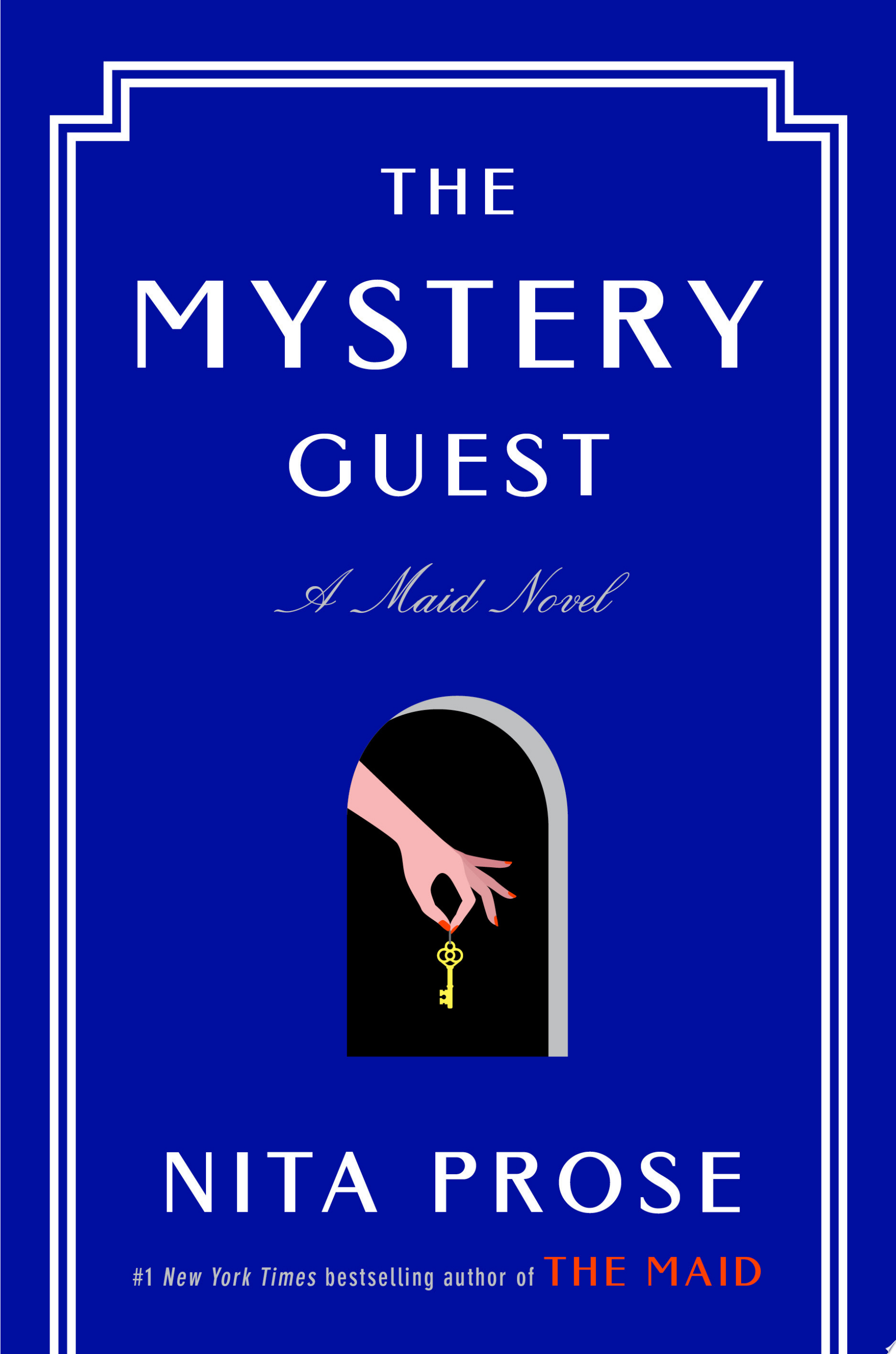
The Mystery Guest
Molly Gray is not like anyone else. With her flair for cleaning and proper etiquette, she has risen through the ranks of the glorious five-star Regency Grand Hotel to become the esteemed Head Maid. But just as her life reaches a pinnacle state of perfection, her world is turned upside down when J. D. Grimthorpe, the world-renowned mystery author, drops dead—very dead—on the hotel’s tearoom floor.
When Detective Stark, Molly’s old foe, investigates the author’s unexpected demise, it becomes clear that this death was murder most foul. Suspects abound, and everyone wants to know: Who killed J. D. Grimthorpe? Was it Lily, the new Maid-in-Training? Or was it Serena, the author’s secretary? Could Mr. Preston, the hotel’s beloved doorman, be hiding something? And is Molly really as innocent as she seems?
As the high-profile death threatens the hotel’s pristine reputation, Molly knows she alone holds the key to unlocking the killer’s identity. But that key is buried deep in her past, as long ago, she knew J. D. Grimthorpe. Molly begins to comb her memory for clues, revisiting her childhood and the mysterious Grimthorpe mansion where she and her dearly departed Gran once worked side by side. With the entire hotel under investigation, Molly must solve the mystery posthaste. Because if there’s one thing she knows for sure, it’s that secrets don’t stay buried forever.
-
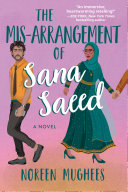
The Mis-Arrangement of Sana Saeed
Thirty-three-year-old hijabi Sana Saeed has put away her childhood dream of ishq—an all-consuming, sweeping love. The arranged dates she’s agreed to have failed time after time, and she has responsibilities to consider—namely her sweet, autistic younger brother, Zia. Sana and Zia are a package deal, and she wouldn’t have it any other way. But their traditional mother won’t allow Sana to be named as his future guardian... unless she’s married.
When Daniel Malik walks into Sana’s office at the Department of Environmental Conservation, she’s astonished—their childhood friendship has been a cherished memory ever since a feud between their families put an end to it eighteen years ago. But there’s no chance of them becoming close again; Daniel may be as hot as a Bollywood heartthrob, but not only is he Sana’s new boss, her mother would disown her if she ever brought him home.
With the clock ticking, Sana agrees to a marriage arranged by her family. She’s seen plenty of arranged marriages grow into love; maybe that will happen for her too. But when a high-stakes case at work forces Sana and Daniel to team up, they find themselves less able—and willing—to play their parts of “good desi children."
-
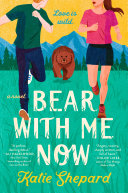
Bear with Me Now
After a panic attack puts him in the hospital, charity executive Teagan Van Zijl is dragged by his sister to a wilderness therapy retreat in Montana. Lost in the woods while absconding from midafternoon meditation, Teagan is nearly eaten by a bear before his rescue by a furious angel in muddy hiking boots: the program’s handywoman, Darcy Albano, who was mostly worried for the bear.
Darcy thought she was going to work as a trail guide when she was hired onto the camp staff but ended up cleaning and hauling instead—merely the latest screwing-over she’s endured since her ex stole her car and her parents ruined her credit score. Teagan becomes the silver lining she didn’t expect, a man clearly going through something yet willing to commit to Darcy’s unique brand of wilderness education as the cure for what ails him.
After weeks in the mountains with Darcy, Teagan doesn’t want to return to New York without her. He hires Darcy as his sober companion—a position he doesn’t actually need filled and for which Darcy is completely unqualified—hoping she can help him figure out a way to move forward. But once they get to the city, all Teagan can think of is how to confess the truth without losing her. Together, they begin to imagine what their lives might look like if they could depend on each other for help—even in outrunning a bear.
-
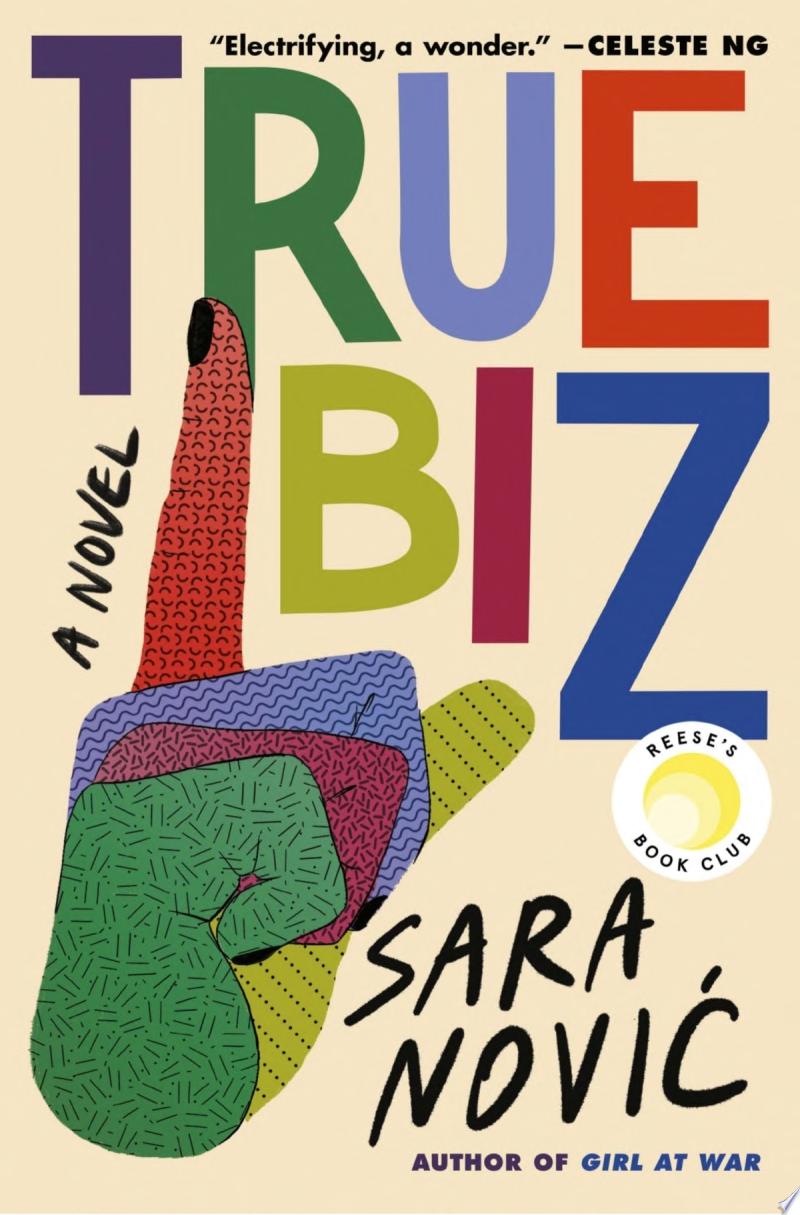
True Biz
True biz? The students at the River Valley School for the Deaf just want to hook up, pass their history finals, and have politicians, doctors, and their parents stop telling them what to do with their bodies. This revelatory novel plunges readers into the halls of a residential school for the deaf, where they’ll meet Charlie, a rebellious transfer student who’s never met another deaf person before; Austin, the school’s golden boy, whose world is rocked when his baby sister is born hearing; and February, the hearing headmistress, a CODA (child of deaf adult(s)) who is fighting to keep her school open and her marriage intact, but might not be able to do both. As a series of crises both personal and political threaten to unravel each of them, Charlie, Austin, and February find their lives inextricable from one another—and changed forever.
-
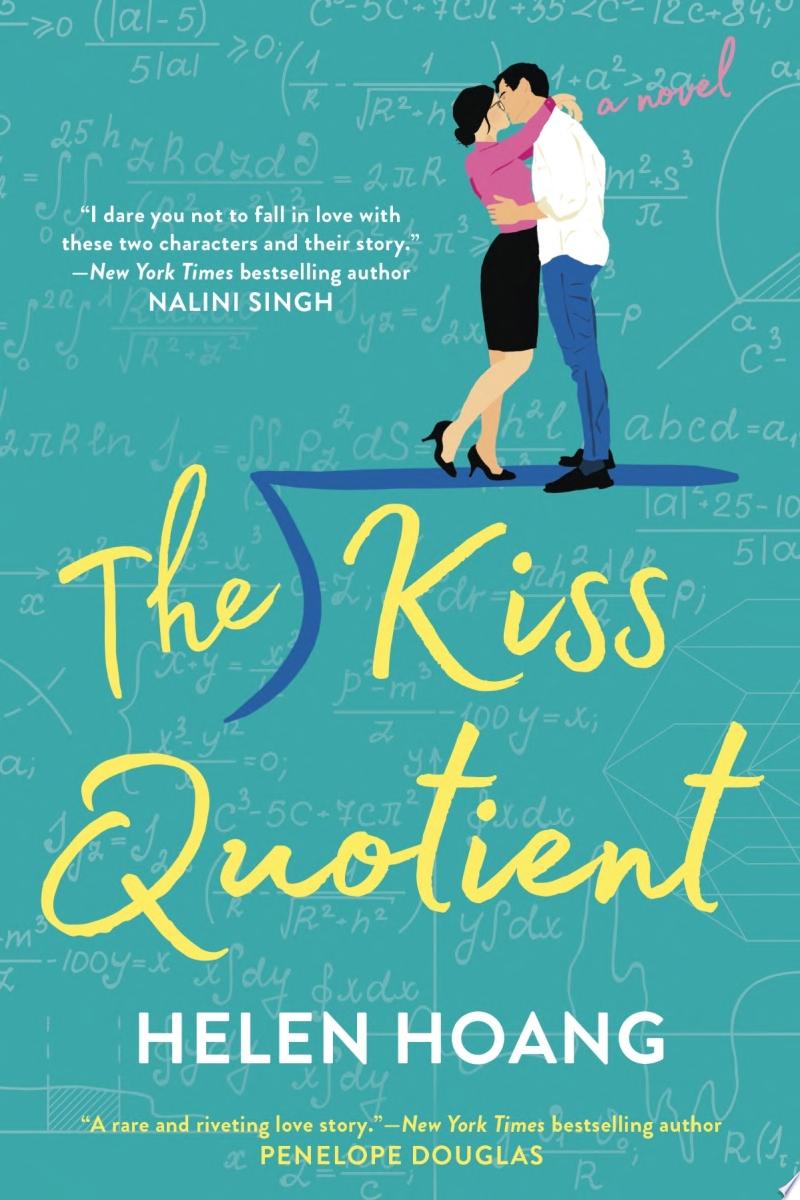
The Kiss Quotient
Stella Lane thinks math is the only thing that unites the universe. She comes up with algorithms to predict customer purchases—a job that has given her more money than she knows what to do with, and way less experience in the dating department than the average thirty-year-old.
It doesn't help that Stella has Asperger's and French kissing reminds her of a shark getting its teeth cleaned by pilot fish. Her conclusion: she needs lots of practice—with a professional. Which is why she hires escort Michael Phan. The Vietnamese and Swedish stunner can't afford to turn down Stella's offer, and agrees to help her check off all the boxes on her lesson plan—from foreplay to more-than-missionary position...
Before long, Stella not only learns to appreciate his kisses, but crave all of the other things he's making her feel. Their no-nonsense partnership starts making a strange kind of sense. And the pattern that emerges will convince Stella that love is the best kind of logic...
-
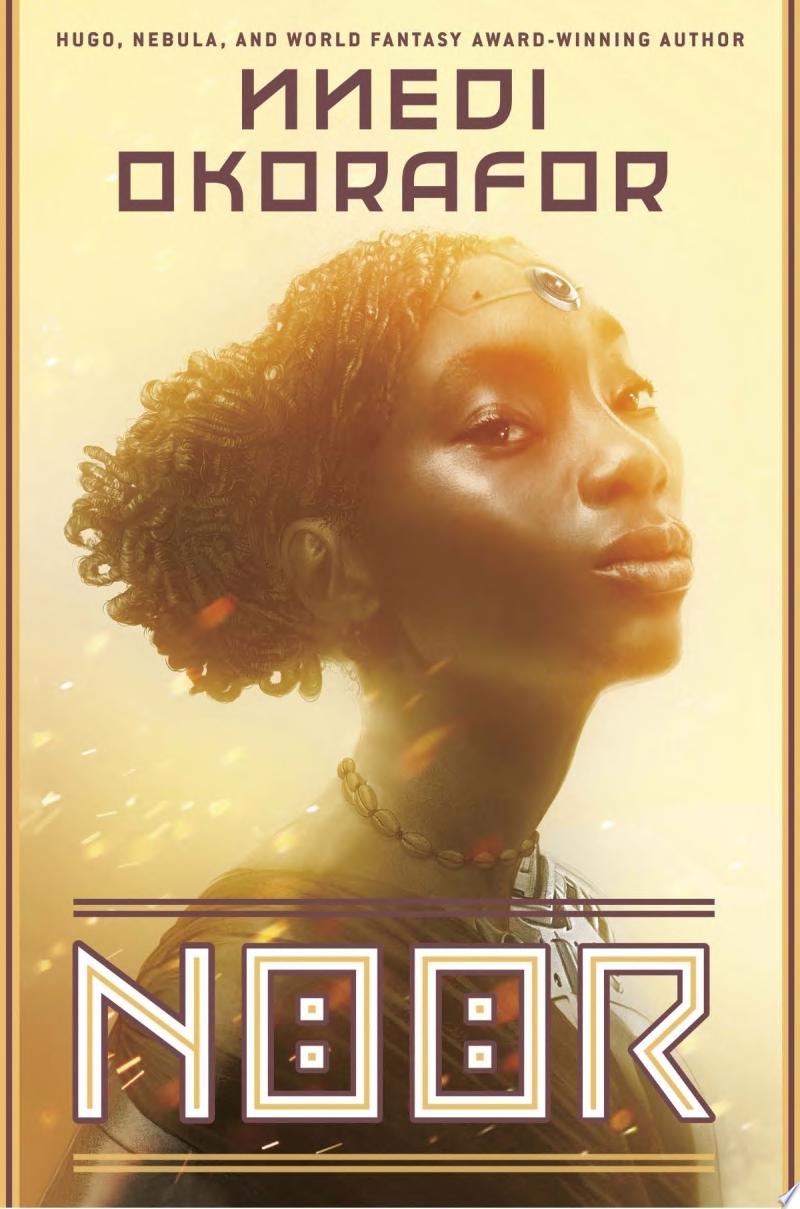
Noor
Anwuli Okwudili prefers to be called AO. To her, these initials have always stood for Artificial Organism. AO has never really felt...natural, and that's putting it lightly. Her parents spent most of the days before she was born praying for her peaceful passing because even in-utero she was "wrong". But she lived. Then came the car accident years later that disabled her even further. Yet instead of viewing her strange body the way the world views it, as freakish, unnatural, even the work of the devil, AO embraces all that she is: A woman with a ton of major and necessary body augmentations. And then one day she goes to her local market and everything goes wrong.
Once on the run, she meets a Fulani herdsman named DNA and the race against time across the deserts of Northern Nigeria begins. In a world where all things are streamed, everyone is watching the "reckoning of the murderess and the terrorist" and the "saga of the wicked woman and mad man" unfold. This fast-paced, relentless journey of tribe, destiny, body, and the wonderland of technology revels in the fact that the future sometimes isn't so predictable. Expect the unaccepted.
-
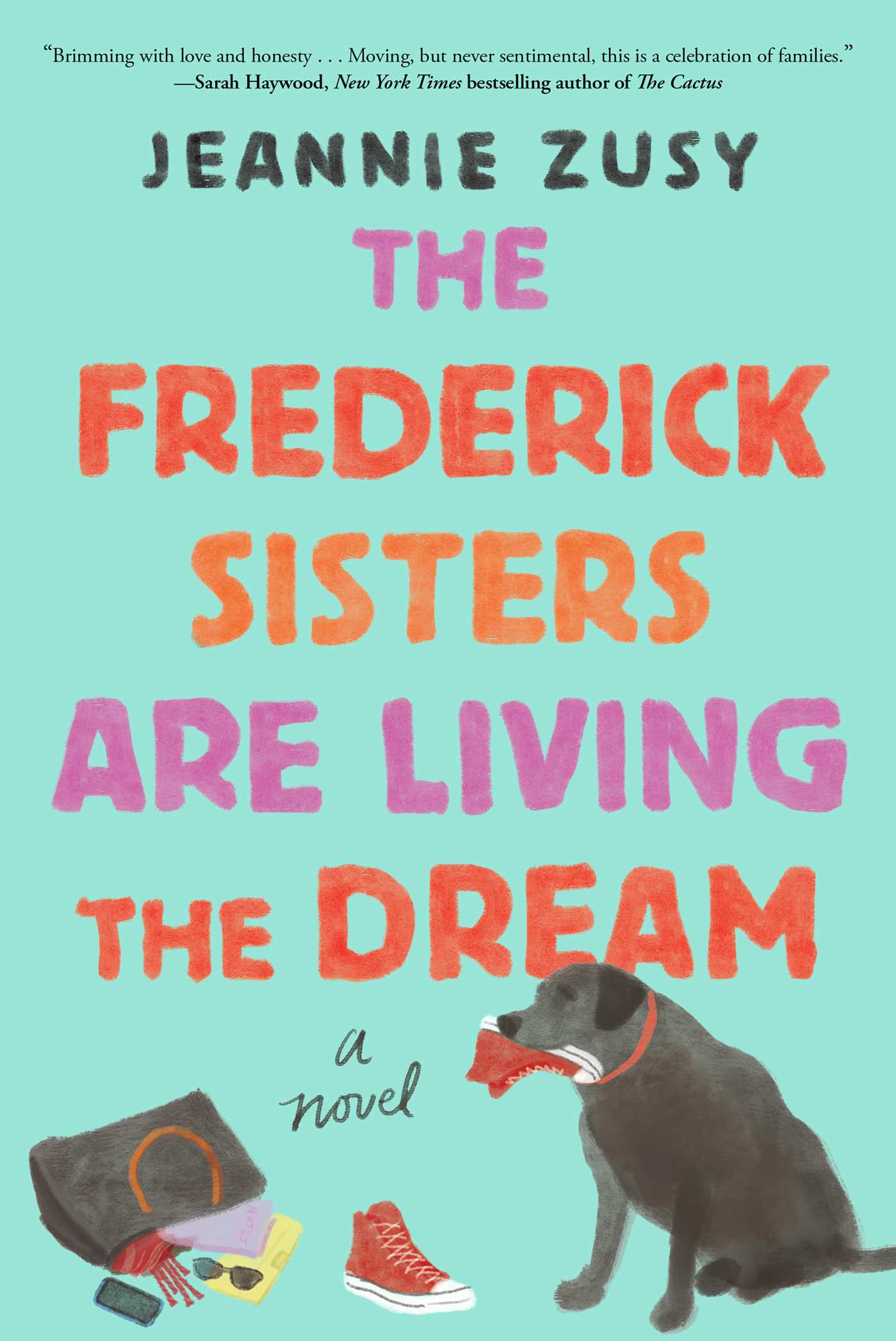
The Frederick Sisters Are Living the Dream
Every family has its fault lines, and when Maggie gets a call from the ER in Maryland where her older sister lives, the cracks start to appear. Ginny, her sugar-loving and diabetic older sister with intellectual disabilities, has overdosed on strawberry Jell-O.
Maggie knows Ginny really can’t live on her own, so she brings her sister and her occasionally vicious dog to live near her in upstate New York. Their other sister, Betsy, is against the idea but as a professional surfer, she is conveniently thousands of miles away.
Thus, Maggie’s life as a caretaker begins. It will take all of her dark humor and patience, already spread thin after a separation, raising two boys, freelancing, an ex who just won’t go away, and starting a dating life, to deal with Ginny’s diapers, sugar addiction, porn habit, and refusal to cooperate.
-
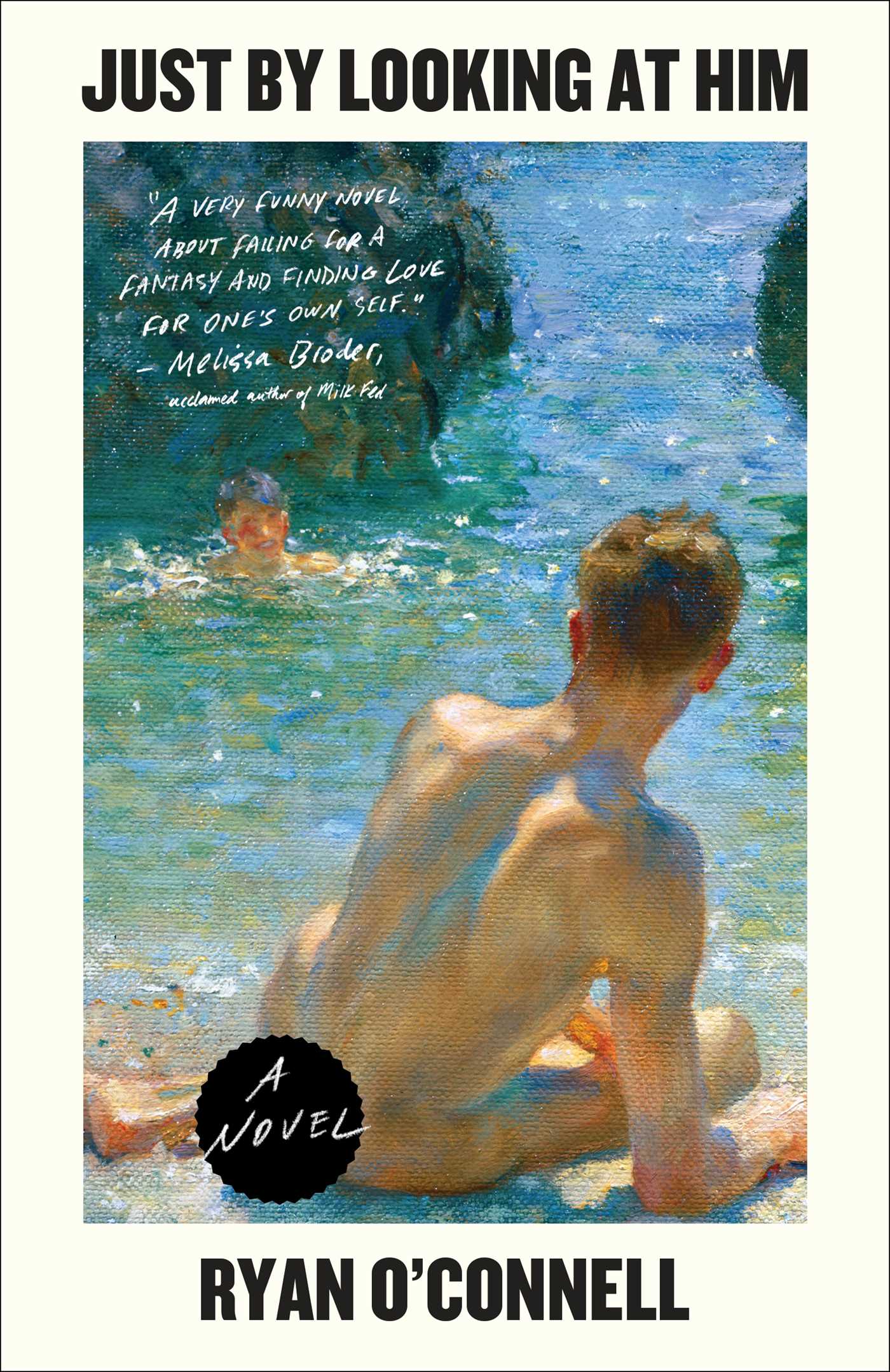
Just by Looking at Him
Elliott appears to be living the dream as a successful TV writer with a doting boyfriend. But behind his Instagram filter of a life, he’s grappling with an intensifying alcohol addiction, he can’t seem to stop cheating on his boyfriend with various sex workers, and his cerebral palsy is making him feel like gay Shrek.
After falling down a rabbit hole of sex, drinking, and Hollywood backstabbing, Elliott decides to limp his way towards redemption. But facing your demons is easier said than done.
-

Tricky
Does your past define you forever?
That's the question LAPD homicide detective Niels Madsen must answer after he gets in the middle of a standoff between two uniformed officers and Cisco, an intellectually disabled man. Cisco is found armed and standing over the body of a man with Down syndrome. Cisco swears the dead man was his good friend, and he didn't hurt him, but in his earlier life, Cisco had been gang member, a brilliant and brutal killer. After he was badly beaten, brain injuries left him him--if he is to be believed--with the intellectual intelligence of a child. Madsen's search for the truth leads him through the special needs community, East LA gang life, and pits him up against the corrupt LA Sheriff's Department.
-
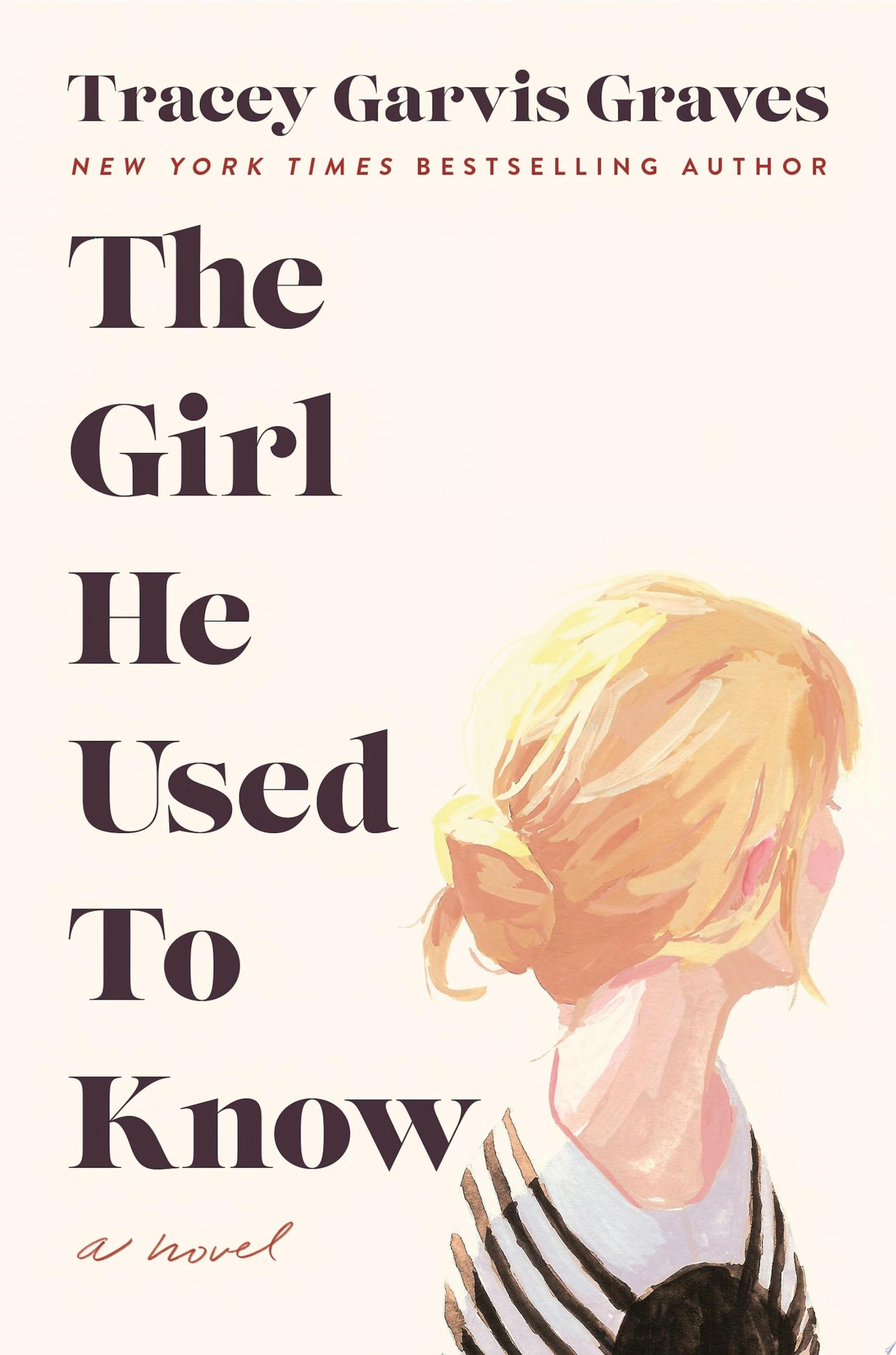
The Girl He Used to Know
Annika Rose is an English major at the University of Illinois. Anxious in social situations where she finds most people's behavior confusing, she'd rather be surrounded by the order and discipline of books or the quiet solitude of playing chess.
Jonathan Hoffman joined the chess club and lost his first game—and his heart—to the shy and awkward, yet brilliant and beautiful Annika. He admires her ability to be true to herself, quirks and all, and accepts the challenges involved in pursuing a relationship with her. Jonathan and Annika bring out the best in each other, finding the confidence and courage within themselves to plan a future together. What follows is a tumultuous yet tender love affair that withstands everything except the unforeseen tragedy that forces them apart, shattering their connection and leaving them to navigate their lives alone.
Now, a decade later, fate reunites Annika and Jonathan in Chicago. She's living the life she wanted as a librarian. He's a Wall Street whiz, recovering from a divorce and seeking a fresh start. The attraction and strong feelings they once shared are instantly rekindled, but until they confront the fears and anxieties that drove them apart, their second chance will end before it truly begins.
-
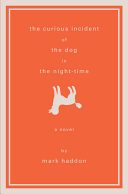
The Curious Incident of the Dog in the Night-time
Christopher John Francis Boone knows all the countries of the world and their capitals and every prime number up to 7,057. He relates well to animals but has no understanding of human emotions. He cannot stand to be touched. And he detests the color yellow.
This improbable story of Christopher's quest to investigate the suspicious death of a neighborhood dog makes for one of the most captivating, unusual, and widely heralded novels in recent years.
-
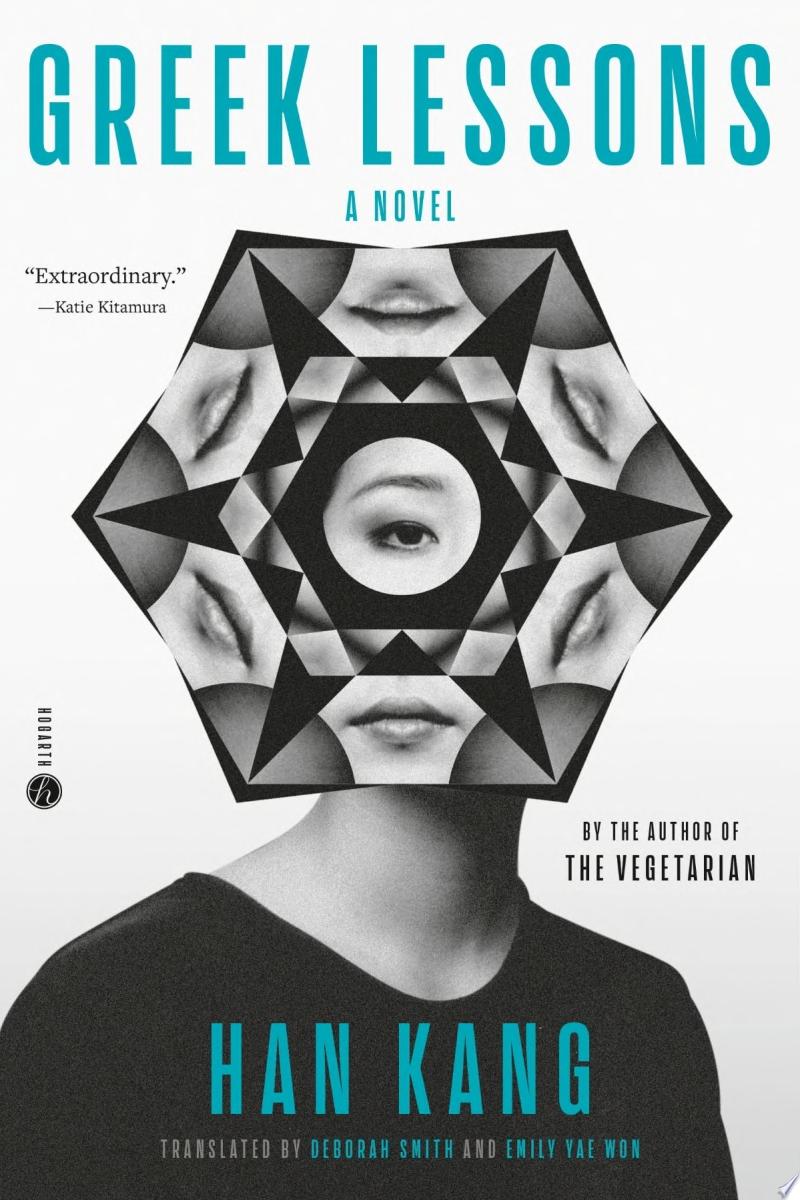
Greek Lessons
In a classroom in Seoul, a young woman watches her Greek language teacher at the blackboard. She tries to speak but has lost her voice. Her teacher finds himself drawn to the silent woman, for day by day he is losing his sight.
Soon the two discover a deeper pain binds them together. For her, in the space of just a few months, she has lost both her mother and the custody battle for her nine-year-old son. For him, it's the pain of growing up between Korea and Germany, being torn between two cultures and languages, and the fear of losing his independence.
Greek Lessons tells the story of two ordinary people brought together at a moment of private anguish—the fading light of a man losing his vision meeting the silence of a woman who has lost her language. Yet these are the very things that draw them to each other. Slowly the two discover a profound sense of unity—their voices intersecting with startling beauty, as they move from darkness to light, from silence to breath and expression.
-
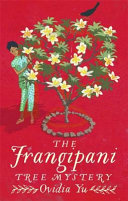
The Frangipani Tree Mystery
First in a delightfully charming crime series set in 1930s Singapore, introducing amateur sleuth Su Lin, a local girl stepping in as governess for the Acting Governor of Singapore.
1936 in the Crown Colony of Singapore, and the British abdication crisis and rising Japanese threat seem very far away. When the Irish nanny looking after Acting Governor Palin's daughter dies suddenly - and in mysterious circumstances - mission school-educated local girl Su Lin - an aspiring journalist trying to escape an arranged marriage and afflicted with polio - is invited to take her place.
But then another murder at the residence occurs and it seems very likely that a killer is stalking the corridors of Government House. It now takes all Su Lin's traditional skills and intelligence to help British-born Chief Inspector Thomas LeFroy solve the murders - and escape with her own life.
Popular Nonfiction - Independence Day - Freedom to Read
-
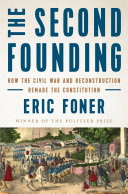
The Second Founding
The Declaration of Independence announced equality as an American ideal, but it took the Civil War and the subsequent adoption of three constitutional amendments to establish that ideal as American law. The Reconstruction amendments abolished slavery, guaranteed all persons due process and equal protection of the law, and equipped black men with the right to vote. They established the principle of birthright citizenship and guaranteed the privileges and immunities of all citizens. The federal government, not the states, was charged with enforcement, reversing the priority of the original Constitution and the Bill of Rights. In grafting the principle of equality onto the Constitution, these revolutionary changes marked the second founding of the United States.
Eric Foner’s compact, insightful history traces the arc of these pivotal amendments from their dramatic origins in pre–Civil War mass meetings of African-American “colored citizens” and in Republican party politics to their virtual nullification in the late nineteenth century. A series of momentous decisions by the Supreme Court narrowed the rights guaranteed in the amendments, while the states actively undermined them. The Jim Crow system was the result. Again today there are serious political challenges to birthright citizenship, voting rights, due process, and equal protection of the law. Like all great works of history, this one informs our understanding of the present as well as the past: knowledge and vigilance are always necessary to secure our basic rights.
-
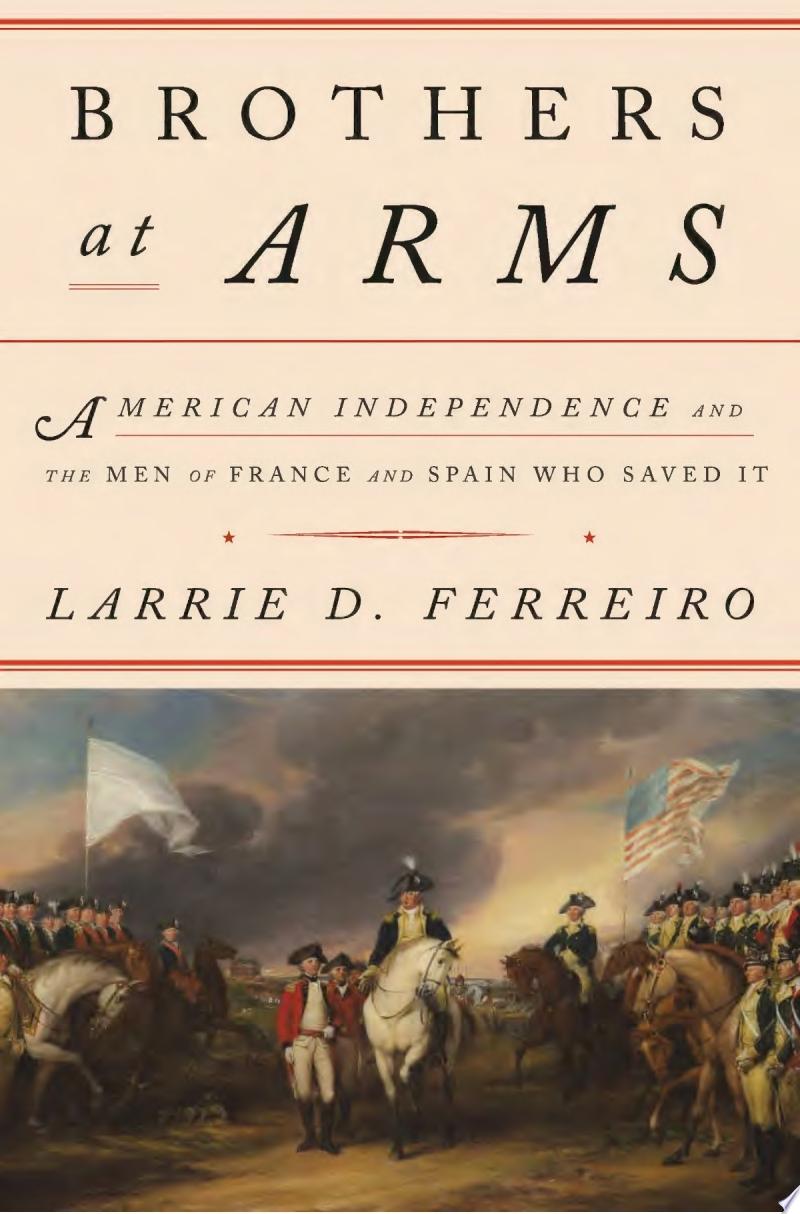
Brothers at Arms
In this groundbreaking, revisionist history, Larrie Ferreiro shows that at the time the first shots were fired at Lexington and Concord the colonists had little chance, if any, of militarily defeating the British. The nascent American nation had no navy, little in the way of artillery, and a militia bereft even of gunpowder. In his detailed accounts Ferreiro shows that without the extensive military and financial support of the French and Spanish, the American cause would never have succeeded. France and Spain provided close to the equivalent of $30 billion and 90 percent of all guns used by the Americans, and they sent soldiers and sailors by the thousands to fight and die alongside the Americans, as well as around the world.
Ferreiro adds to the historical records the names of French and Spanish diplomats, merchants, soldiers, and sailors whose contribution is at last given recognition. Instead of viewing the American Revolution in isolation, Brothers at Arms reveals the birth of the American nation as the centerpiece of an international coalition fighting against a common enemy.
-
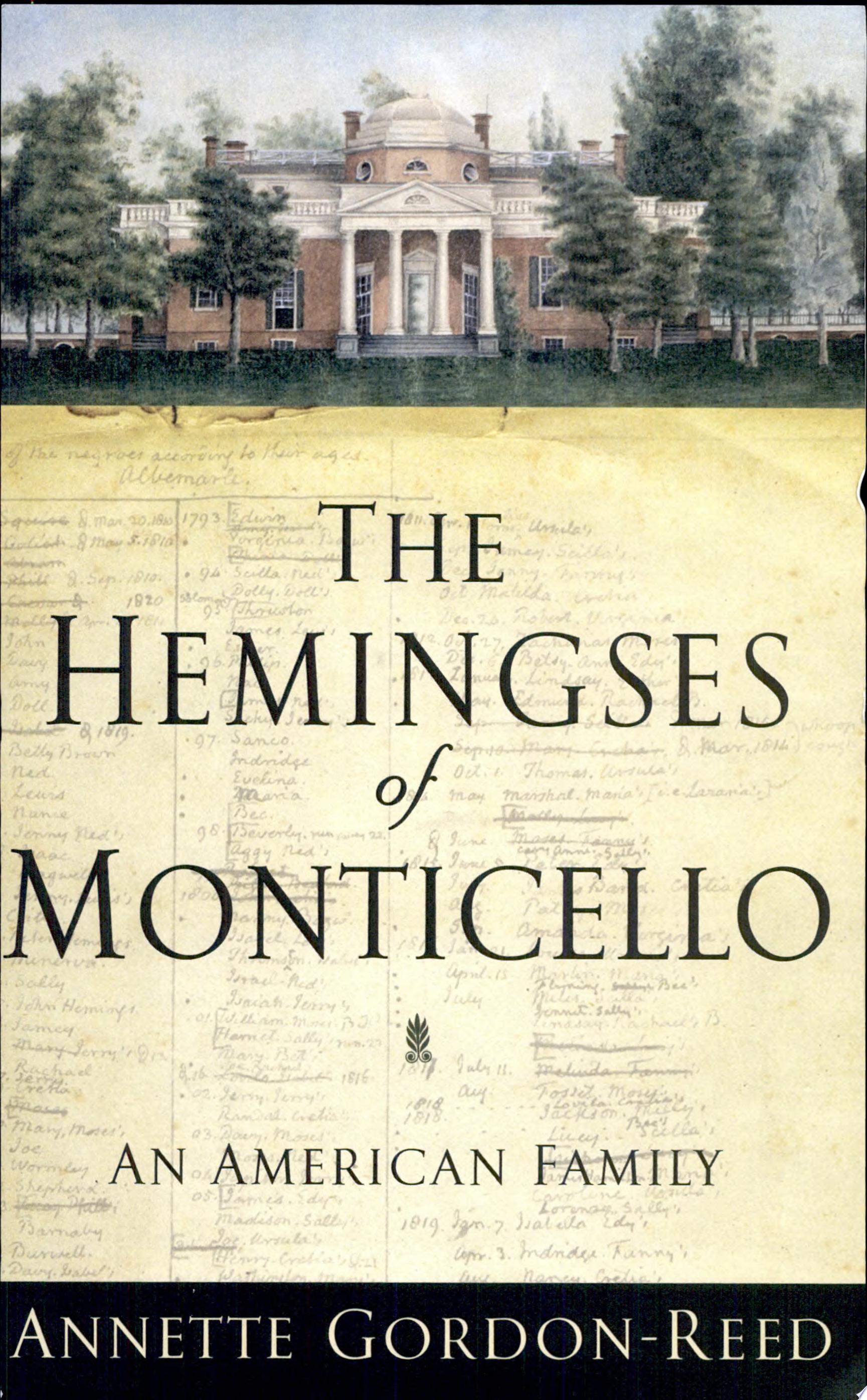
The Hemingses of Monticello
In the mid-1700s the English captain of a trading ship that made runs between England and the Virginia colony fathered a child by an enslaved woman living near Williamsburg. The woman, whose name is unknown and who is believed to have been born in Africa, was owned by the Eppeses, a prominent Virginia family. The captain, whose surname was Hemings, and the woman had a daughter. They named her Elizabeth.
Annette Gordon-Reed, author of the highly acclaimed historiography Thomas Jefferson and Sally Hemings: An American Controversy, unearths startling new information about the Hemingses, Jefferson, and his white family. Although the book presents the most detailed and richly drawn portrait ever written of Sarah Hemings, better known by her nickname Sally, who bore seven children by Jefferson over the course of their thirty-eight-year liaison, The Hemingses of Monticello tells more than the story of her life with Jefferson and their children. The Hemingses as a whole take their rightful place in the narrative of the family’s extraordinary engagement with one of history’s most important figures.
As The Hemingses of Monticello makes vividly clear, Monticello can no longer be known only as the home of a remarkable American leader, the author of the Declaration of Independence; nor can the story of the Hemingses, whose close blood ties to our third president have been expunged from history until very recently, be left out of the telling of America’s story. With its empathetic and insightful consideration of human beings acting in almost unimaginably difficult and complicated family circumstances, The Hemingses of Monticello is history as great literature. It is a remarkable achievement.
-
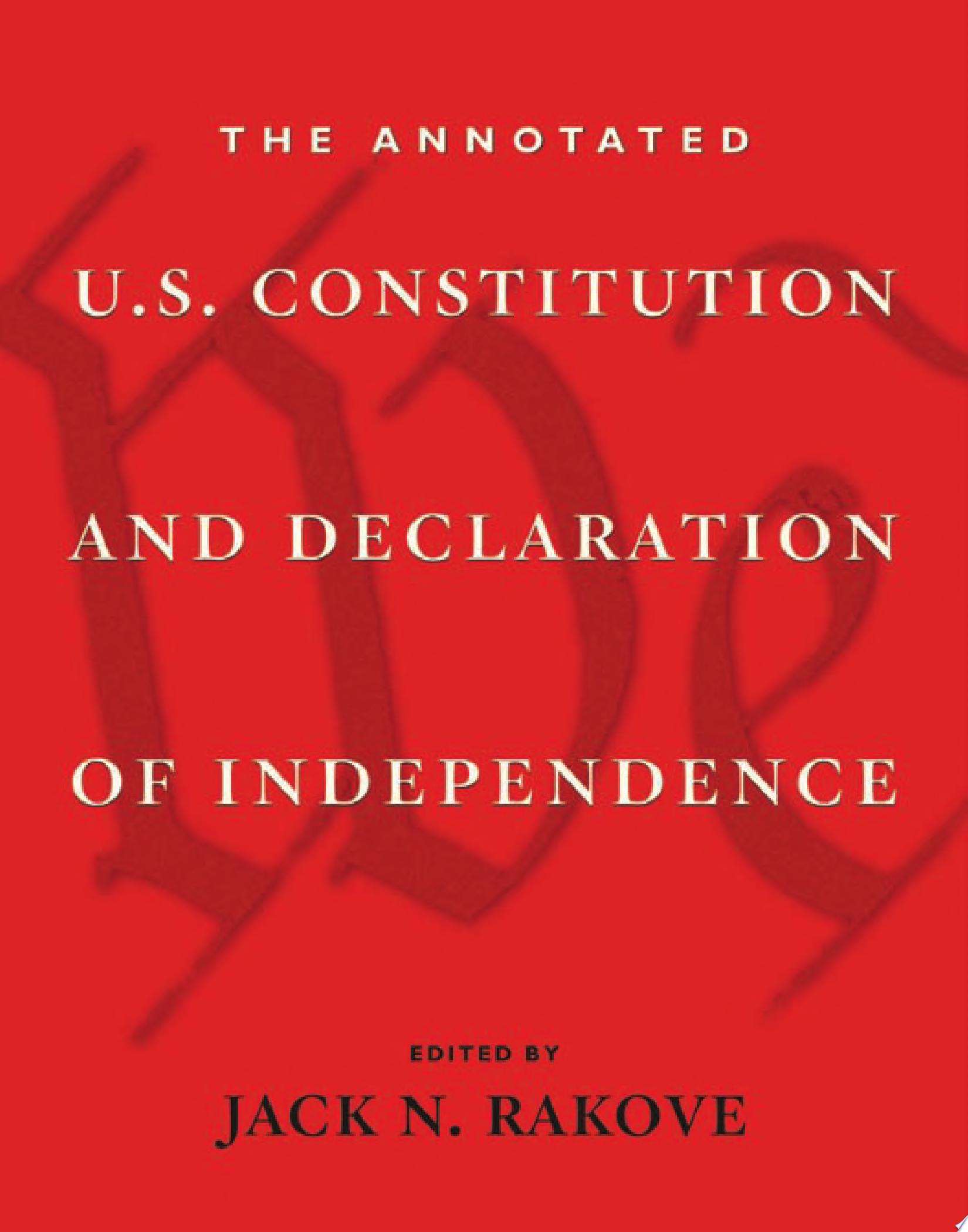
The Annotated U.S. Constitution and Declaration of Independence
In this annotated edition are the two founding documents of the United States of America: the Declaration of Independence (1776), our great revolutionary manifesto, and the Constitution (1787–88), in which “We the People” forged a new nation and built the framework for our federal republic. Together with the Bill of Rights and the Civil War amendments, these documents constitute what James Madison called our “political scriptures” and have come to define us as a people. Now a Pulitzer Prize–winning historian serves as a guide to these texts, providing historical contexts and offering interpretive commentary.
In an introductory essay written for the general reader, Jack N. Rakove provides a narrative political account of how these documents came to be written. In his commentary on the Declaration of Independence, Rakove sets the historical context for a fuller appreciation of the important preamble and the list of charges leveled against the Crown. When he glosses the Constitution, the Bill of Rights, and the subsequent amendments, Rakove once again provides helpful historical background, targets language that has proven particularly difficult or controversial, and cites leading Supreme Court cases. A chronology of events provides a framework for understanding the road to Philadelphia. The general reader will not find a better, more helpful guide to our founding documents than Jack N. Rakove.
-
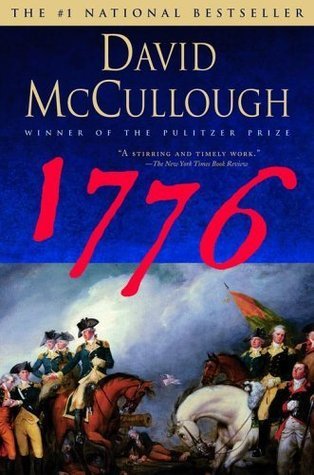
1776
In this masterful book, David McCullough tells the intensely human story of those who marched with General George Washington in the year of the Declaration of Independence—when the whole American cause was riding on their success, without which all hope for independence would have been dashed and the noble ideals of the Declaration would have amounted to little more than words on paper.
Based on extensive research in both American and British archives, 1776 is a powerful drama written with extraordinary narrative vitality. It is the story of Americans in the ranks, men of every shape, size, and color, farmers, schoolteachers, shoemakers, no-accounts, and mere boys turned soldiers. And it is the story of the King’s men, the British commander, William Howe, and his highly disciplined redcoats who looked on their rebel foes with contempt and fought with a valor too little known.
Written as a companion work to his celebrated biography of John Adams, David McCullough’s 1776 is another landmark in the literature of American history.
-
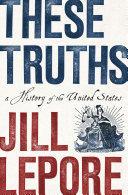
These Truths
Written in elegiac prose, Lepore’s groundbreaking investigation places truth itself—a devotion to facts, proof, and evidence—at the center of the nation’s history. The American experiment rests on three ideas—"these truths," Jefferson called them—political equality, natural rights, and the sovereignty of the people. And it rests, too, on a fearless dedication to inquiry, Lepore argues, because self-government depends on it. But has the nation, and democracy itself, delivered on that promise?
These Truths tells this uniquely American story, beginning in 1492, asking whether the course of events over more than five centuries has proven the nation’s truths, or belied them. To answer that question, Lepore traces the intertwined histories of American politics, law, journalism, and technology, from the colonial town meeting to the nineteenth-century party machine, from talk radio to twenty-first-century Internet polls, from Magna Carta to the Patriot Act, from the printing press to Facebook News.
Along the way, Lepore’s sovereign chronicle is filled with arresting sketches of both well-known and lesser-known Americans, from a parade of presidents and a rogues’ gallery of political mischief makers to the intrepid leaders of protest movements, including Frederick Douglass, the famed abolitionist orator; William Jennings Bryan, the three-time presidential candidate and ultimately tragic populist; Pauli Murray, the visionary civil rights strategist; and Phyllis Schlafly, the uncredited architect of modern conservatism.
-
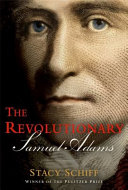
The Revolutionary
Thomas Jefferson asserted that if there was any leader of the Revolution, "Samuel Adams was the man." With high-minded ideals and bare-knuckle tactics, Adams led what could be called the greatest campaign of civil resistance in American history.
Stacy Schiff returns Adams to his seat of glory, introducing us to the shrewd and eloquent man who supplied the moral backbone of the American Revolution. A singular figure at a singular moment, Adams amplified the Boston Massacre. He helped to mastermind the Boston Tea Party. He employed every tool available to rally a town, a colony, and eventually a band of colonies behind him, creating the cause that created a country. For his efforts he became the most wanted man in America: When Paul Revere rode to Lexington in 1775, it was to warn Samuel Adams that he was about to be arrested for treason.
In The Revolutionary: Samuel Adams, Schiff brings her masterful skills to Adams's improbable life, illuminating his transformation from aimless son of a well-off family to tireless, beguiling radical who mobilized the colonies. Arresting, original, and deliriously dramatic, this is a long-overdue chapter in the history of our nation.
-
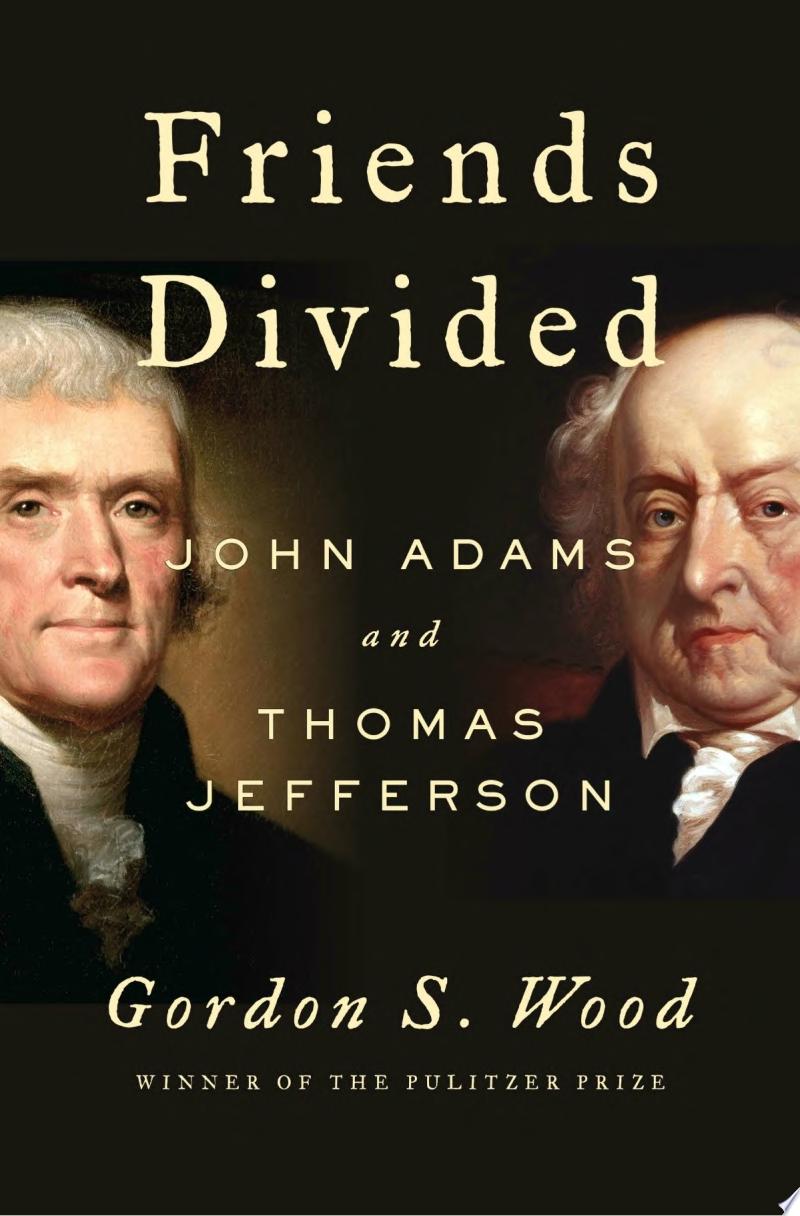
Friends Divided
Thomas Jefferson and John Adams could scarcely have come from more different worlds, or been more different in temperament. Jefferson, the optimist with enough faith in the innate goodness of his fellow man to be democracy's champion, was an aristocratic Southern slaveowner, while Adams, the overachiever from New England's rising middling classes, painfully aware he was no aristocrat, was a skeptic about popular rule and a defender of a more elitist view of government. They worked closely in the crucible of revolution, crafting the Declaration of Independence and leading, with Franklin, the diplomatic effort that brought France into the fight. But ultimately, their profound differences would lead to a fundamental crisis, in their friendship and in the nation writ large, as they became the figureheads of two entirely new forces, the first American political parties. It was a bitter breach, lasting through the presidential administrations of both men, and beyond.
But late in life, something remarkable happened: these two men were nudged into reconciliation. What started as a grudging trickle of correspondence became a great flood, and a friendship was rekindled, over the course of hundreds of letters. In their final years they were the last surviving founding fathers and cherished their role in this mighty young republic as it approached the half century mark in 1826. At last, on the afternoon of July 4th, 50 years to the day after the signing of the Declaration, Adams let out a sigh and said, At least Jefferson still lives. He died soon thereafter. In fact, a few hours earlier on that same day, far to the south in his home in Monticello, Jefferson died as well.
Arguably no relationship in this country's history carries as much freight as that of John Adams of Massachusetts and Thomas Jefferson of Virginia. Gordon Wood has more than done justice to these entwined lives and their meaning; he has written a magnificent new addition to America's collective story.
-
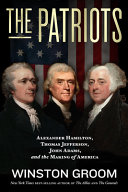
The Patriots
When the Revolutionary War ended in victory, there remained a stupendous problem: establishing a workable democratic government in the vast, newly independent country. Three key founding fathers played significant roles: John Adams, the brilliant, dour New Englander; Thomas Jefferson, the aristocratic Southern renaissance man; and Alexander Hamilton, an immigrant from the Caribbean island of Nevis.
In this riveting narrative, best-selling author Winston Groom illuminates these men as the patriots fundamentally responsible for the ideas that shaped the emerging United States. Their lives could not have been more different, and their relationships with each other were often rife with animosity. And yet they led the charge--two of them creating and signing the Declaration of Independence, and the third establishing a national treasury and the earliest delineation of a Republican party. The time in which they lived was fraught with danger, and their achievements were strained by vast antagonisms that recall the intense political polarization of today. But through it all, they managed to shoulder the heavy mantle of creating the United States of America, putting aside their differences to make a great country. Drawing on extensive correspondence, Groom shares the remarkable story of the beginnings of our great nation.
-

American Rebels
Before they were central figures in American history, John Hancock, John Adams, Josiah Quincy Junior, Abigail Smith Adams, and Dorothy Quincy Hancock had forged intimate connections during their childhood in Braintree, Massachusetts. Raised as loyal British subjects who quickly saw the need to rebel, their collaborations against the Crown and Parliament were formed years before the revolution and became stronger during the period of rising taxes and increasing British troop presence in Boston. Together, the families witnessed the horrors of the Boston Massacre, the Battles of Lexington and Concord, and Bunker Hill; the trials and tribulations of the Siege of Boston; meetings of the Continental Congress; transatlantic missions for peace and their abysmal failures; and the final steps that led to the signing of the Declaration of Independence.
American Rebels explores how the desire for independence cut across class lines, binding people together as well as dividing them—rebels versus loyalists—as they pursued commonly-held goals of opportunity, liberty, and stability. Nina Sankovitch's new book is a fresh history of our revolution that makes readers look more closely at Massachusetts and the small town of Braintree when they think about the story of America’s early years.
-
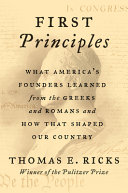
First Principles
On the morning after the 2016 presidential election, Thomas Ricks awoke with a few questions on his mind: What kind of nation did we now have? Is it what was designed or intended by the nation's founders? Trying to get as close to the source as he could, Ricks decided to go back and read the philosophy and literature that shaped the founders' thinking, and the letters they wrote to each other debating these crucial works--among them the Iliad, Plutarch's Lives, and the works of Xenophon, Epicurus, Aristotle, Cato, and Cicero. For though much attention has been paid the influence of English political philosophers, like John Locke, closer to their own era, the founders were far more immersed in the literature of the ancient world.
The first four American presidents came to their classical knowledge differently. Washington absorbed it mainly from the elite culture of his day; Adams from the laws and rhetoric of Rome; Jefferson immersed himself in classical philosophy, especially Epicureanism; and Madison, both a groundbreaking researcher and a deft politician, spent years studying the ancient world like a political scientist. Each of their experiences, and distinctive learning, played an essential role in the formation of the United States. In examining how and what they studied, looking at them in the unusual light of the classical world, Ricks is able to draw arresting and fresh portraits of men we thought we knew.
-
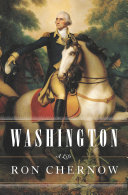
Washington
Celebrated biographer Ron Chernow provides a richly nuanced portrait of the father of our nation and the first president of the United States. With a breadth and depth matched by no other one volume biography of George Washington, this crisply paced narrative carries the reader through his adventurous early years, his heroic exploits with the Continental Army during the Revolutionary War, his presiding over the Constitutional Convention, and his magnificent performance as America's first president. In this groundbreaking work, based on massive research, Chernow shatters forever the stereotype of George Washington as a stolid, unemotional figure and brings to vivid life a dashing, passionate man of fiery opinions and many moods.
-
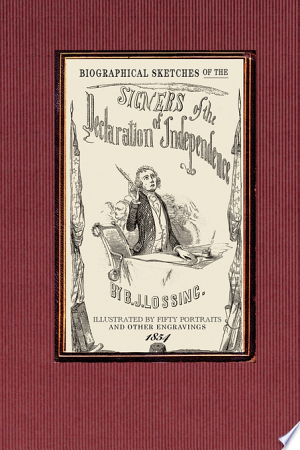
Biographical Sketches of the Signers Of the Declaration of Independence
Popular American historian Benson J. Lossing was a prolific writer whose Biographical Sketches of the Signers of the Declaration of American Independence reads like a "Who's Who" of the country's earliest patriots. It reveals concise details about the more than fifty elected delegates, representing all thirteen colonies, who signed one of the most famous documents in American history. From Thomas Jefferson and John Hancock to less-remembered but equally important personages like Richard Henry Lee and Robert Morris, Lossing offers interesting facts and his own portrait engravings of the individuals who were present at the formation of the United States of America.
-
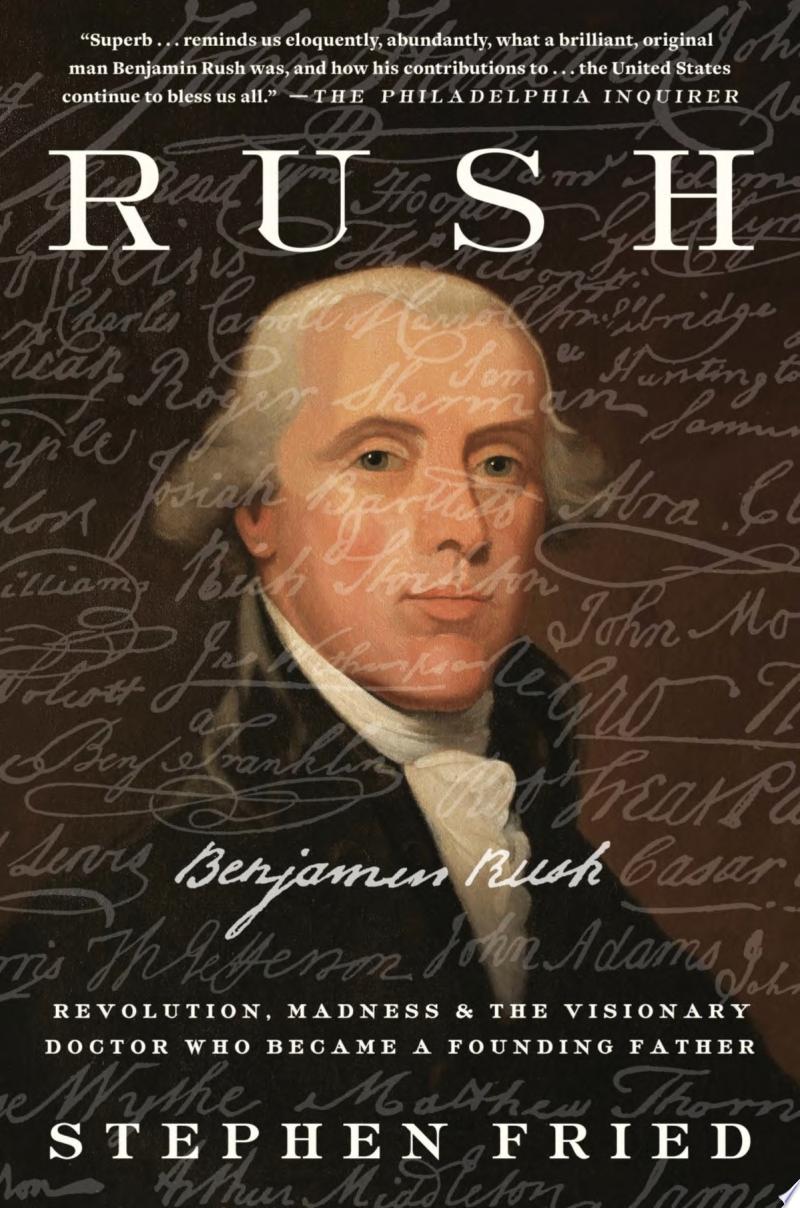
Rush
By the time he was thirty, Dr. Benjamin Rush had signed the Declaration of Independence, edited Common Sense, toured Europe as Benjamin Franklin’s protégé, and become John Adams’s confidant, and was soon to be appointed Washington’s surgeon general. And as with the greatest Revolutionary minds, Rush was only just beginning his role in 1776 in the American experiment. As the new republic coalesced, he became a visionary writer and reformer; a medical pioneer whose insights and reforms revolutionized the treatment of mental illness; an opponent of slavery and prejudice by race, religion, or gender; an adviser to, and often the physician of, America’s first leaders; and “the American Hippocrates.” Rush reveals his singular life and towering legacy, installing him in the pantheon of our wisest and boldest Founding Fathers.














